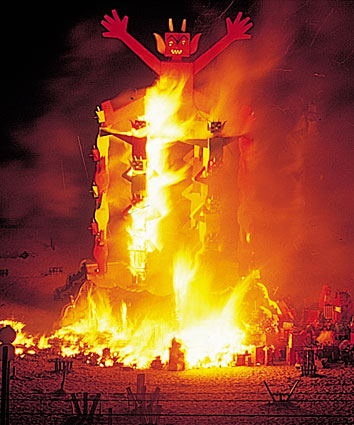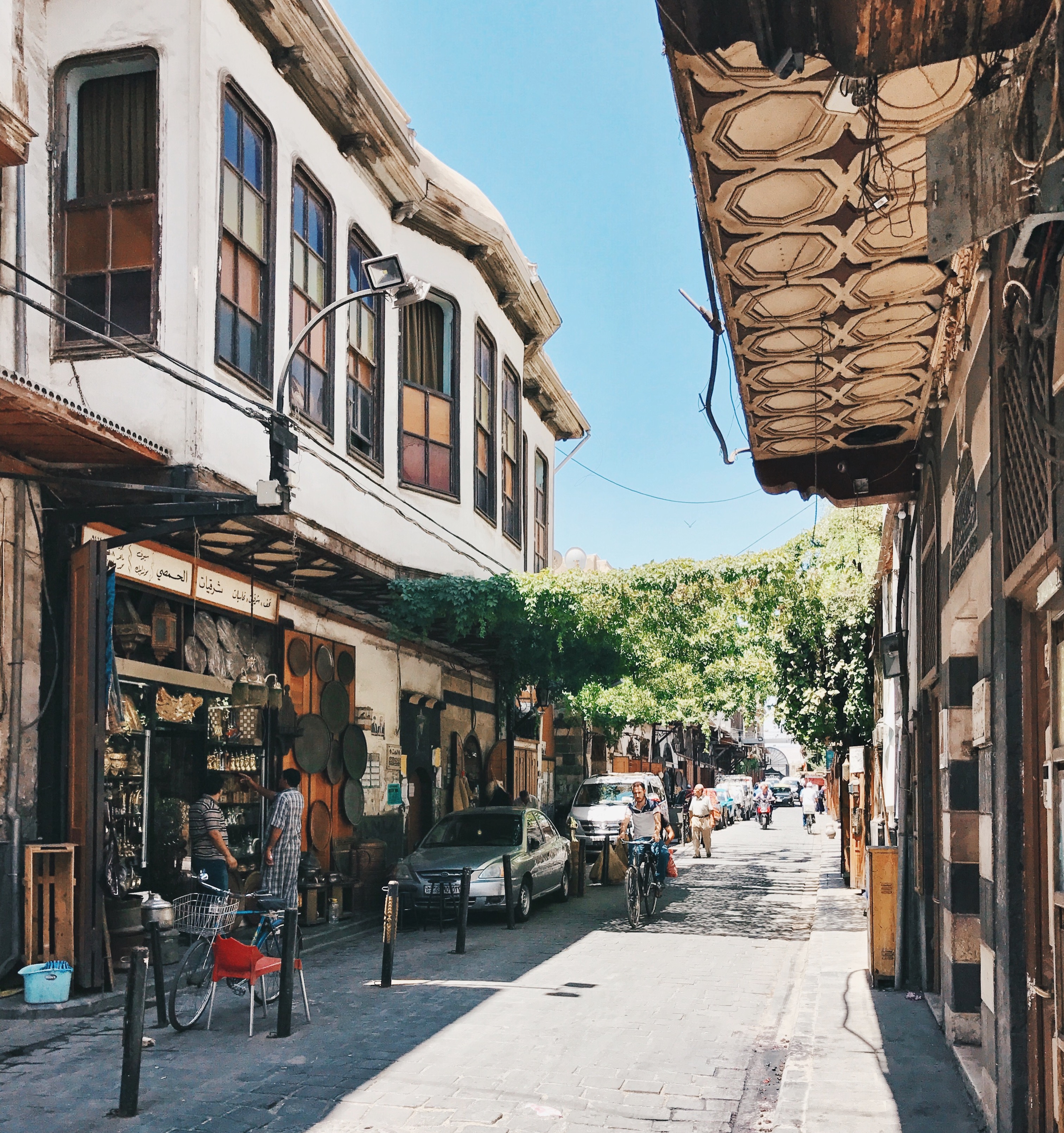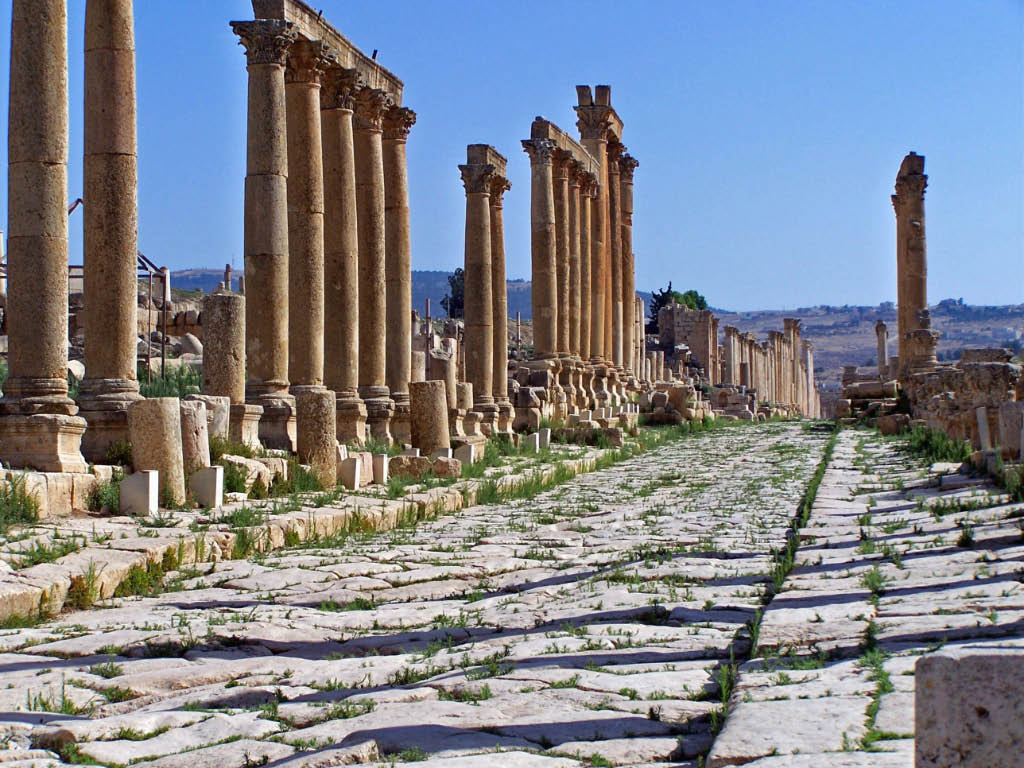|
Badalona Museum
The Badalona Museum, opened in 1966, hosts the remains of the Roman city of Baetulo. The remains include Thermae, Roman baths, shops, housing complexes, and part of the Cardo, cardo maximus and Decumanus Maximus, decumanus maximus. Its museum holds a collection of artifacts from its own excavations and objects from other eras relevant to the city. In 2010, the decumanus site, with remains from the Cardo Maximus and the Decumanus Maximus, diverse shops or tavernae, and three Insula (building), insulae, became part of the visit. A permanent exhibition opened that describes the first settlements recorded in Badalona and the history and characteristics of Roman Baetulo. Some of its exhibits are the Venus of Badalona, the Tabula hospitalis, the ceramic vessel ''Vas de les Naus'', the portrait of Agripina. and three Iberian steles. History In 1955, archaeologist Josep Maria Cuyas i Tolosa discovered the ruins of the Baetulo Roman Thermae. By 1956, the underground and ground floors had ... [...More Info...] [...Related Items...] OR: [Wikipedia] [Google] [Baidu] |
Badalona
Badalona (, , , ) is a Municipalities of Spain, municipality to the immediate north east of Barcelona in Catalonia, Spain. It is located on the left bank of the Besòs River and on the Mediterranean Sea, in the Barcelona metropolitan area. By population, it is the third largest city in Catalonia and the Ranked lists of Spanish municipalities, twenty-third in Spain. It became a city in 1897. Names The name Badalona comes from ancient Iberian word ''Baitolo'' according to the legend of several bronze coins of the end of the 2nd century BC found in the city. This word was the origin of the Latin name ''Baetulo'' that was as the Romans named the new city they founded off the coast of present Badalona. The oldest mention of the name Baetulo is from ''De Chorographia'' of Pomponius Mela (43–44 AD), who use the same name for the Besòs (river), Besòs river (named ''Bissaucio'' during the Middle Ages). Following the Roman era, during the High Middle Ages the name ''Baetulo'' evolved t ... [...More Info...] [...Related Items...] OR: [Wikipedia] [Google] [Baidu] |
Insula (building)
In Roman architecture, an ''insula'' (Latin for "island", plural ''insulae'') was one of two things: either a kind of apartment building, or a city block. This article deals with the former definition, that of a type of building. ''Insulae'' housed most of the urban citizen population of ancient Rome's massive population ranging from 800,000 to 1 million inhabitants in the early imperial period. Residents of an ''insula'' included ordinary people of lower- or middle-class status (the ''plebeians'') and all but the wealthiest from the upper-middle class (the ''equites''). The traditional elite and the very wealthy lived in a ''domus'', a large single-family residence, but the two kinds of housing were intermingled in the city and not segregated into separate neighborhoods. The ground-level floor of the ''insula'' was used for ''tabernae'', shops and businesses, with living spaces above. Like modern apartment buildings, an ''insula'' might have a name, usually referring to the ow ... [...More Info...] [...Related Items...] OR: [Wikipedia] [Google] [Baidu] |
Barcelona Provincial Council Local Museum Network
The Barcelona Provincial Council Local Museum Network ( ca, Xarxa de Museus Locals), also known as ''Catalonia’s Biggest Museum'', is a tool for support and collaboration from and for the museums of the province, which makes available to municipalities a series of services and actions aimed at improving, through the provision of direct services and research into viable formulas for supramunicipal cooperation, the management, conservation and dissemination of heritage and the museum facilities of the towns of Barcelona province. It is managed from the Cultural Heritage Office, which in turn depends on the Department of Knowledge and New Technologies of Barcelona Provincial Council. It was started in 2001, the continuation of a collaboration effort established by the Local Museum Cooperation Committee, which was founded in 1988 in connection with the preparation for the 1st Conference on Museums and Local Administration. Its main objective is to work as a team toward a dynamic, vers ... [...More Info...] [...Related Items...] OR: [Wikipedia] [Google] [Baidu] |
Archaeological Museums In Catalonia
Archaeology or archeology is the scientific study of human activity through the recovery and analysis of material culture. The archaeological record consists of artifacts, architecture, biofacts or ecofacts, sites, and cultural landscapes. Archaeology can be considered both a social science and a branch of the humanities. It is usually considered an independent academic discipline, but may also be classified as part of anthropology (in North America – the four-field approach), history or geography. Archaeologists study human prehistory and history, from the development of the first stone tools at Lomekwi in East Africa 3.3 million years ago up until recent decades. Archaeology is distinct from palaeontology, which is the study of fossil remains. Archaeology is particularly important for learning about prehistoric societies, for which, by definition, there are no written records. Prehistory includes over 99% of the human past, from the Paleolithic until the adve ... [...More Info...] [...Related Items...] OR: [Wikipedia] [Google] [Baidu] |
Museums Established In 1966
A museum ( ; plural museums or, rarely, musea) is a building or institution that cares for and displays a collection of artifacts and other objects of artistic, cultural, historical, or scientific importance. Many public museums make these items available for public viewing through exhibits that may be permanent or temporary. The largest museums are located in major cities throughout the world, while thousands of local museums exist in smaller cities, towns, and rural areas. Museums have varying aims, ranging from the conservation and documentation of their collection, serving researchers and specialists, to catering to the general public. The goal of serving researchers is not only scientific, but intended to serve the general public. There are many types of museums, including art museums, natural history museums, science museums, war museums, and children's museums. According to the International Council of Museums (ICOM), there are more than 55,000 museums in 202 countries ... [...More Info...] [...Related Items...] OR: [Wikipedia] [Google] [Baidu] |
1966 Establishments In Spain
Events January * January 1 – In a coup, Colonel Jean-Bédel Bokassa takes over as military ruler of the Central African Republic, ousting President David Dacko. * January 3 – 1966 Upper Voltan coup d'état: President Maurice Yaméogo is deposed by a military coup in the Republic of Upper Volta (modern-day Burkina Faso). * January 10 ** Pakistani–Indian peace negotiations end successfully with the signing of the Tashkent Declaration, a day before the sudden death of Indian prime minister Lal Bahadur Shastri. ** Georgia House of Representatives, The House of Representatives of the US state of Georgia refuses to allow African-American representative Julian Bond to take his seat, because of his anti-war stance. ** A Commonwealth Prime Ministers' Conference convenes in Lagos, Nigeria, primarily to discuss Rhodesia. * January 12 – United States President Lyndon Johnson states that the United States should stay in South Vietnam until Communism, Communist aggression there is e ... [...More Info...] [...Related Items...] OR: [Wikipedia] [Google] [Baidu] |
Tabula Hospitalis Baetulo
{{disambig ...
Tabula may refer to: *Tabula (company), a semiconductor company *Tabula (game), a game thought to be the predecessor to backgammon * ''Tabula'' (magazine), a magazine published in Tbilisi, Georgia *Tabula ansata, a tablet with handles See also * Tabula Rasa (other) ''Tabula rasa'' ("blank slate") is a philosophical concept. Tabula Rasa may also refer to: Television * "Tabula Rasa", an episode of ''Buffy the Vampire Slayer'' * "Tabula Rasa", an episode of ''Heroes'' * "Tabula Rasa", an episode of ''Lost' ... [...More Info...] [...Related Items...] OR: [Wikipedia] [Google] [Baidu] |
Stele
A stele ( ),Anglicized plural steles ( ); Greek plural stelai ( ), from Greek , ''stēlē''. The Greek plural is written , ''stēlai'', but this is only rarely encountered in English. or occasionally stela (plural ''stelas'' or ''stelæ''), when derived from Latin, is a stone or wooden slab, generally taller than it is wide, erected in the ancient world as a monument. The surface of the stele often has text, ornamentation, or both. These may be inscribed, carved in relief, or painted. Stelae were created for many reasons. Grave stelae were used for funerary or commemorative purposes. Stelae as slabs of stone would also be used as ancient Greek and Roman government notices or as boundary markers to mark borders or property lines. Stelae were occasionally erected as memorials to battles. For example, along with other memorials, there are more than half-a-dozen steles erected on the battlefield of Waterloo at the locations of notable actions by participants in battle. A traditio ... [...More Info...] [...Related Items...] OR: [Wikipedia] [Google] [Baidu] |
Decumanus Maximus
In Roman urban planning, a decumanus was an east–west-oriented road in a Roman city or castrum (military camp). The main decumanus of a particular city was the Decumanus Maximus, or most often simply "the Decumanus". In the rectangular street grid of the typical Roman city plan, the decumanus was crossed by the perpendicular cardo, a north–south street. In a military camp, the decumanus connected the Porta Praetoria (closest to the enemy) to the Porta Decumana (away from the enemy). In the center – called '' groma'' – of a city or castrum, the Decumanus Maximus crossed the perpendicular ''Cardo Maximus'', the primary north–south road. The Forum was normally located close to this intersection of the Decumanus Maximus and the Cardo Maximus. Etymology ''Decumanus'' or ''decimanus'' was the Latin word for 'tenth'. This name is said to come from the fact that the ''via decumana'' or ''decimana'' (the ''tenth'') separated the Tenth Cohort from the Ninth in the legionary enc ... [...More Info...] [...Related Items...] OR: [Wikipedia] [Google] [Baidu] |
Catalonia
Catalonia (; ca, Catalunya ; Aranese Occitan: ''Catalonha'' ; es, Cataluña ) is an autonomous community of Spain, designated as a ''nationality'' by its Statute of Autonomy. Most of the territory (except the Val d'Aran) lies on the northeast of the Iberian Peninsula, to the south of the Pyrenees mountain range. Catalonia is administratively divided into four provinces: Barcelona, Girona, Lleida, and Tarragona. The capital and largest city, Barcelona is the second-most populated municipality in Spain and the fifth-most populous urban area in the European Union.Demographia: World Urban Areas – Demographia, April 2018 Current day Catalonia comprises most of the medieval and early modern Principality o ... [...More Info...] [...Related Items...] OR: [Wikipedia] [Google] [Baidu] |
Cardo
A cardo (plural ''cardines'') was a north–south street in Ancient Roman cities and military camps as an integral component of city planning. The cardo maximus, or most often the ''cardo'', was the main or central north–south-oriented street. Etymology The ''cardo maximus'' was the "hinge" or axis of the city, derived from Greek καρδίᾱ, kardia ("heart") and as such was generally lined with shops and vendors, and served as a hub of economic life. Most Roman cities also had a Decumanus Maximus, an east–west street that served as a secondary main street. Due to varying geography, in some cities the Decumanus is the main street and the Cardo is secondary, but in general the Cardo maximus served as the primary street. The Forum was normally located at, or close to, the intersection of the Decumanus and the Cardo. Examples Apamea, Syria The Cardo Maximus of Apamea, Syria ran through the centre of the city directly from North to South, linked the principal gates of t ... [...More Info...] [...Related Items...] OR: [Wikipedia] [Google] [Baidu] |
Thermae
In ancient Rome, (from Greek , "hot") and (from Greek ) were facilities for bathing. usually refers to the large Roman Empire, imperial public bath, bath complexes, while were smaller-scale facilities, public or private, that existed in great numbers throughout Rome. Most Roman cities had at least one – if not many – such buildings, which were centers not only for bathing, but socializing and reading as well. Bathhouses were also provided for wealthy private Roman villa, villas, domus, town houses, and castra, forts. They were supplied with water from an adjacent river or stream, or within cities by aqueduct (watercourse), aqueduct. The water would be heated by fire then channelled into the caldarium (hot bathing room). The design of baths is discussed by Vitruvius in ''De architectura'(V.10) Terminology '','' '','' '','' and may all be translated as 'bath' or 'baths', though Latin sources distinguish among these terms. or , derived from the Greek language, G ... [...More Info...] [...Related Items...] OR: [Wikipedia] [Google] [Baidu] |

_-_2021-08-27_-_2.jpg)

.jpg)




